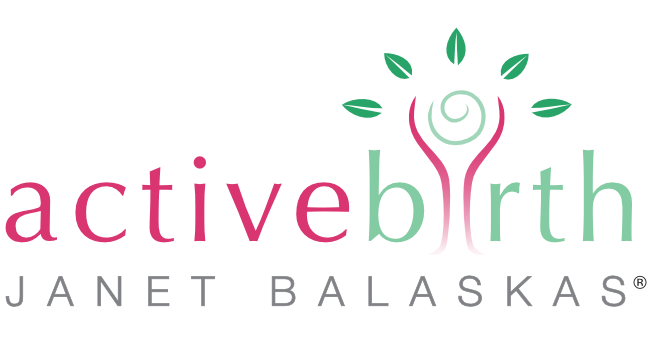These days the topic of induction comes up for most women at the end of pregnancy. Thanks to everyone who sent in a question about this. This is my last newsletter on this topic – I suggest you save these newsletters in case you need them at the end of your pregnancy.
Unless the need to induce is medically indicated, it is wise to request a thorough assessment which includes an ultrasound scan and possibly a second opinion. In the absence of a medical problem, you may wish to wait before inducing labour with medical methods. In this case daily monitoring and reassessment of the situation day by day can be reassuring for you and for your medical team – usually this is done from 41.5 weeks, and this option can be discussed with your midwives and consultant.
If not urgent, take a couple of days to think about it. I always recommend small goals i.e. I would like to wait and do one more yoga class, or till after the weekend etc.
If there is a medical indication for an induction, you do also have the option to request a calm caesarean section instead from the outset. You can also opt for this at any stage during an induction if you feel exhausted, if baby is distressed or there is no or very slow progress. There may be a good reason for this, such as the way baby is presenting, and then there is no reason to persist with an induction.
Phase 1
If you do decide that an induction would be best for you and your baby, the first step is the application of Prostin – a form of synthetic prostaglandin applied vaginally with a pessary or applicator several times a few hours apart, to coat the cervix. This is a minimally invasive procedure and acts like natural prostaglandin to soften or ‘ripen’ the cervix. This is best done in the morning in hospital after a night’s sleep at home. This can act as a trigger to start labour and if it works after a few doses, labour may then progress normally. In this case you may not need to progress to the next stage of the induction. You can use a birth pool and have intermittent handheld monitoring just as if you had started labour spontaneously. You may still be eligible for a birth centre.
TIP: Discuss and decide at any stage if you want to have your membranes broken or not by the midwife. This is sometimes done routinely during a vaginal exam when induced. Make sure you are asked first for your consent. This can have the effect of intensifying the labour.
Phase 2
If a syntocinon drip is used, the application of prostaglandin first is always a good idea. It helps to prepare the cervix and can prevent overstimulation of the uterus.
Syntocinon, which is a synthetic type of oxytocin, is given via an intravenous drip.
Request a mobile drip with a long lead if available. Ask to have it sited in the forearm of the hand you use least, to limit your mobility as little as possible.
TIP: Ask for the minimum effective dose to be used, so that the contractions are phased in slowly and gently – as much like a normal labour as possible. They can be intensified gradually by the midwife slowly increasing the frequency of the drips. The speed of a syntocinon drip can be regulated, so if you are finding the contractions too fast and intense at any stage, you can ask the midwife to turn it down.
Positions
A long lead will enable several options.
If you wish to lie down – best to lie on your left side with the backrest raised. From time to time the midwife can assist you to roll onto the other side. This will ensure a better blood supply to the uterus and baby than lying on your back or semi – reclining.
You can also arrange yourself comfortably over a beanbag and pillows, in a kneeling position leaning forward over the backrest so that your trunk is supported, and you can rest completely between contractions. The arm with the
drip attached can be supported by pillows. Kneeling will help you to deal with the intensity of the contractions, reduce pain and improve circulation to the baby, and so reduce the risk of foetal distress.
It may also be possible to sit on a chair beside the bed and lean forward onto cushions placed on the bed.
TIP: Monitoring or listening in to baby is important to be sure baby is coping well throughout, and can be very reassuring, when attached to a drip.
Monitoring can usually be done just as easily in the side lying, kneeling forward, or sitting positions using frequent hand-held sonic aid monitoring, a belt monitor, a scalp electrode, or wireless monitor. You do not need to lie down to be monitored unless you want to. Check the options with your midwife and discuss your preferences.
What to expect:
Expect the first contractions to be crampy and difficult to cope with. Their intensity may ease within 30 minutes when your natural pain-relieving endorphin levels will have had a chance to increase.
Some women manage to apply breathing and hypnobirthing techniques without medical pain relief when the induction is slow and regulated. However, to have a positive experience a mild low dose epidural can make all the difference, so don’t hesitate to accept medical pain relief if you need it. Syntocinon makes the uterus contract but does not have the pain-relieving effects of natural oxytocin, so sometimes it’s a wise choice to make this a comfortable and relaxed experience with a mild or low dose epidural. You can still use the positions I have suggested, and your breathing techniques. This will minimise the risk of distress to the baby.
TIP: Don’t be alone. Emotional support is crucial. In addition to your birth partner, you might ask the midwife, a student midwife or nurse to stay with you at all times, other than to pop out briefly. This will ensure that any problem is quickly noticed. If you know in advance that your labour will be induced, it can be a great idea to have a doula with you, especially if midwives are in short supply.
At the end of the day
Birth is unpredictable and doesn’t always go according to our plans or expectations. If you manage to avoid a routine induction, the efforts you made to assess the situation may feel very worthwhile in retrospect. On the other hand, if the wisest decision at the time was to opt for an
induction, you may feel really pleased with the way things went or, on the other hand, have some regret. A whole range of emotions are possible when birth turns out to be very different than we intended.
As new parents you have plenty to do and a newborn baby to enjoy. When labour is induced for good reasons, and/or and or you have a caesarean section, there is no need to feel disappointed or that you have failed in anyway.
Producing a live and healthy baby is an enormous achievement, so try not to let your experience of
birth become more important than your baby and remember to appreciate yourself for doing so well!
Disclaimer
Active Birth is designed for mothers who wish to give birth naturally and have had a healthy pregnancy and no medical complications during labour and birth. Aspects of an Active Birth can also sometimes be used in combination with medical interventions. The website and newsletters offer general information only. They are not a substitute for the professional advice, diagnosis or treatment offered by your midwives or doctors. The Active Birth Centre/ Janet Balaskas in general, accept no liability for the guidance herein, and advise that you do not disregard professional medical advice and inform yourself with other trusted evidence-based sources of information when making your decisions.

